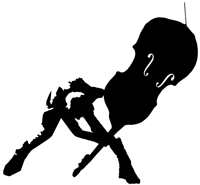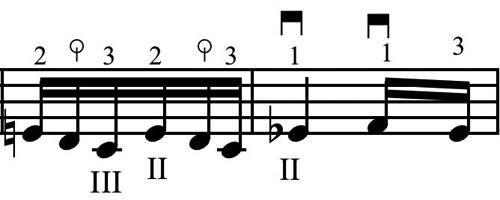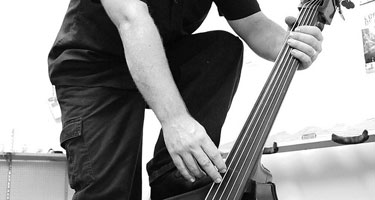The Lowdown with Dr. D - Page 12
Dedication: A Guide to Practicing
Recently I wrote to you about purposeful practicing. Purposeful practice can ensure that we are constantly solidifying our foundation and moving forward, both as an instrumentalist and a musician. However, creating a practice plan and schedule with intent is simply the first step. We must put this plan into action for it to be successful. The execution of a plan...
Intentional Practice
Too many instrumentalists begin their daily practice session without knowing specifically what they wish to accomplish that day. If they think about their practice goals at all, they do so in a cursory, vague and last minute manner. Even worse, some serious students think the goal of practice is simply to “put in the time.” They may spend several hours...
Mental Practice
We all have strategies on how to practice when time is short. There are times, however, when even a short practice session is not feasible. In times such as this, mental practice can be a valuable tool. Mental practice is also valuable as a regular part of your sessions. For such practice to be valuable, your visualizations will need to...
Holding the Upright Bass
There are a plethora of ideas on how one should hold the double bass and new variants seem to surface every day. Some stance decisions will be made based on specific performance situations, but most will reflect someone’s pedagogical background (i.e. who their teachers were) and personal preference. For example, it is unlikely you will sit on a stool while...
Working with Drones – Introduction: Improving Intonation
One of the best ways I know to increase one’s intonational precision is to play against a held drone note. It is excellent not only for left hand finger spacing, shifting, but also for improving one’s aural pitch discrimination. You can create your own drone note using a looper, midi program, etc. or your metronome or tuner may have the...
Developing Stamina
I have trouble with stamina, especially when playing difficult music. How do you develop stamina? – John H. Developing stamina can be a real challenge on an instrument as large and as physically demanding as the upright bass. If developing stamina is a goal you need to achieve, I would suggest focusing on the following items as you begin your...
Chops vs. Groove
A while back, someone asked me to discuss the concept of “Chops vs. Groove.” The reader didn’t elaborate very much, but the impression I got was they felt having, or perhaps displaying, “chops” and the ability to groove were somehow mutually exclusive. Although someone can groove pretty hard with only a moderate level of technique, it doesn’t take much investigation...
Tips for Memorizing Music
I have trouble memorizing. Do you have any suggestions? —–Gina D. In general, if we have played a piece enough times, we often find we have memorized it without trying. However, some pieces (and styles of music) are more difficult to memorize than others and may require special attention. Also, on occasion, we may also find that we don’t have...
Essential Accessories for Your First Upright
For many people, buying an upright bass is a financial transaction that requires some planning. Nearly everyone wants the highest quality instrument they can afford and, as a result, many spend their last available dollar (or more!) on the instrument itself. This is completely understandable, and laudable. However, if it’s your first upright you should also consider obtaining a few...
Technique Series: Fast Fingers
Although there are musical situations when we want our left hand fingers to strike the fingerboard forcefully, we most often want to use the minimum amount of pressure, and no more. To do otherwise is generally inefficient, clumsy, noisy and speeds up muscle fatigue, among other things. When it comes to left hand technique, the speed of the finger movement...
More Approaches to Jazz Tunes
I’ve talked in the past about delving into a new tune using what I call “The Treatment.” It’s a flexible yet organized way to become more fluent on a tune, especially if it is new to you. Sometimes, however, we are looking to delve even more deeply into a tune, or perhaps we find ourselves falling into a musical rut....
Recording the Upright Bass
Steve Bunker, a rockabilly player, recently asked me about the “best way to record the upright bass.” While I don’t think there is any one single way that is the best to record every upright bass in every style of music, I have noticed a few things over the years. Get your sound before you walk into the studio This...


